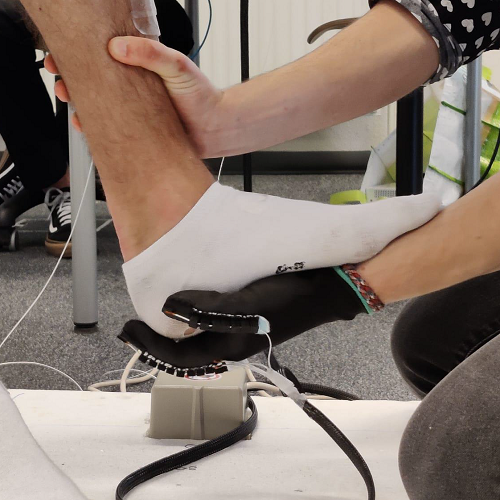At present, 20% of all orthopedic footwear fails to meet the patient’s needs. The footwear is either used too little or not used at all. We believe this is a result of the clinician operating in a data-poor environment. The current way of creating footwear is by applying plaster to the patient its foot and manipulating it into the desired shape while the plaster is drying. After the plaster has dried, the corrections of the orthopedist are solidified, which can be scanned with for further analysis. The downside of this method is that the information of the original uncorrected foot cannot be derived from the cast and is thus inaccessible during consultation with colleagues. This makes it hard to share and learn these procedures, especially since a large part of the orthopedist its manipulations are based on experience and intuition.
Project goal
The aim of the Smart Scan project is to bring evidence-based medicine to the orthopedic clinic. It tries to solve the earlier described issue by recording, as accurately as possible, the manipulation of the orthopedist during diagnosis. Since all the recorded motion tracking data will be digital, it can benefit from the already existing advantages that this medium brings. This includes easier sharing and more in-depth analysis. It may also be possible to derive both the uncorrected foot and manipulated foot of the patient from this data, which leads into the main research question for this project: ‘How can we measure and determine if recorded points are on or off the surface of the foot and whether the points on the foot are manipulations by the orthopedist or not?’
Project results
Our answer to the main question (see above) is as follows. For starters, the use of the working prototype of the glove wouldn’t be a bad idea. With this device it is possible to track the movements of the clinician’s hand. The glove requires specialized software that saves the collected points, and makes sure that when the foot moves during the examination the measured data points move accordingly.
The device should also be able to determine if the recorded points are on or off the surface and whether they are manipulations or not. For this taks, an artificial intelligence (AI) model has been created that can classify and filter these points. The filtering code is implemented in MATLAB and C++.
Video
Acknowledgement
We would like to thank Fontys Paramedical School for their support of the BeCreative Smart Scan project.
